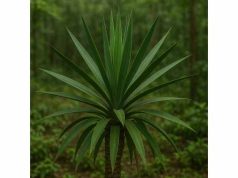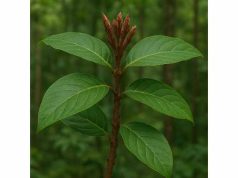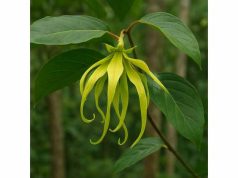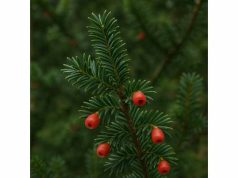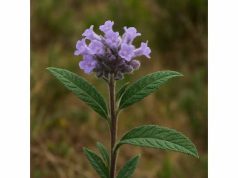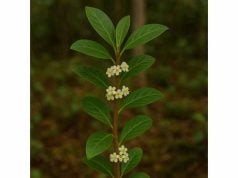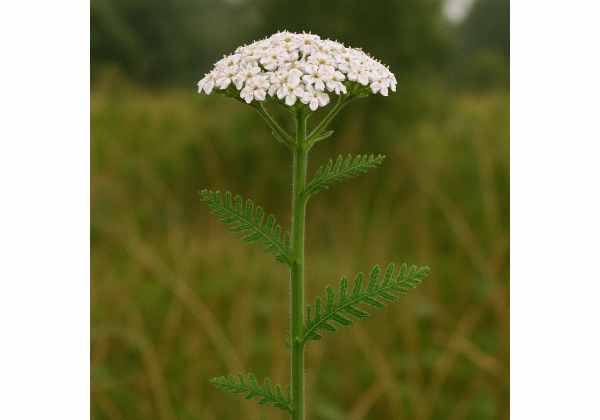
Yarrow (Achillea millefolium) is a hardy perennial herb celebrated for its striking feathery foliage and clusters of tiny white flowers. Revered in traditional medicine for millennia, yarrow offers potent anti-inflammatory, hemostatic, and antimicrobial properties, thanks to active compounds like flavonoids (apigenin, luteolin), sesquiterpene lactones (achillin), and tannins. Its uses span digestive support, wound healing, and circulatory health, while modern research underscores its role in modulating immune responses and easing menstrual discomfort. Whether brewed as a soothing tea, applied as a topical poultice, or distilled into a hydrosol, yarrow remains a versatile botanical ally in herbal first aid kits and wellness practices worldwide.
Table of Contents
- Botanical Characteristics and Growth Conditions
- Phytochemical Profile and Active Molecules
- Health Advantages and Core Attributes
- Therapeutic Applications and Safety Considerations
- Research Insights and Landmark Studies
- FAQ
Botanical Characteristics and Growth Conditions
Yarrow (Achillea millefolium) belongs to the Asteraceae family and thrives across temperate regions of Europe, Asia, and North America. Botanically, it is identifiable by its fern-like, pinnately dissected leaves and flat-topped inflorescences—known as corymbs—bearing dozens of small composite flowers each 3–5 mm in diameter. These flower heads, often white or pale pink, house both ray and disc florets that attract pollinators such as bees and butterflies.
Morphology and Identification
- Leaves: Alternate, sessile, pinnate with 15–20 pairs of linear segments, giving a silvery-green appearance. Each leaflet has a distinctive aroma when crushed.
- Stems: Erect, 30–60 cm tall (occasionally up to 1 m), often branching near the top, with fine hairs.
- Flowers: Bloom June–September. Flower heads form flat umbels, each comprising 20–40 disk florets surrounded by 5–15 white ray florets.
- Roots: Rhizomatous, forming extensive creeping networks ideal for spreading and soil stabilization.
Taxonomy and Habitat
- Kingdom: Plantae
- Order: Asterales
- Family: Asteraceae
- Genus: Achillea
- Species: millefolium
- Subspecies: Various regional subspecies adapted to local climates.
Yarrow colonizes meadows, roadsides, and open woodlands, demonstrating remarkable resilience. It tolerates poor, well-drained soils with pH 5.5–8.0, thriving in full sun yet tolerating light shade. Frost-hardy and drought-resistant, yarrow’s long taproot enables access to deep moisture, while its woolly leaf hairs reduce water loss.
Cultivation and Harvest
Gardeners propagate yarrow through seed sowing in spring or division of mature clumps in autumn. Optimal growth occurs when divided every three years to prevent overcrowding. Harvest aerial parts when plants reach full bloom; cut flower heads in the morning after dew evaporates to preserve essential oils. Dry in a shaded, well-ventilated area to maintain color and potency.
By understanding yarrow’s botanical profile and cultivation needs, herbalists and gardeners can ensure a robust supply of high-quality plant material, maximizing {HERB_NAME} Benefits and Properties for therapeutic use.
Phytochemical Profile and Active Molecules
The therapeutic value of yarrow emerges from a complex array of chemical constituents. Below is an in-depth look at its principal active compounds:
- Flavonoids
- Examples: Apigenin, luteolin, quercetin.
- Actions: Provide strong antioxidant capacity by scavenging reactive oxygen species and inhibiting lipid peroxidation. Apigenin exhibits mild anxiolytic effects and supports vascular health by strengthening capillary walls.
- Sesquiterpene Lactones
- Key Molecules: Achillin, achillicin.
- Pharmacology: Impart bitter properties that stimulate digestive secretions and exhibit potent anti-inflammatory effects by blocking NF-κB signaling pathways.
- Tannins (Phenolic Polymers)
- Functions: Astringent compounds that constrict tissue, making yarrow useful in wound healing and as a mild hemostatic agent to reduce bleeding.
- Volatile Oils (Essential Oil Fraction)
- Components: Chamazulene, camphor, borneol, cineole.
- Therapeutic Effects: Chamazulene provides anti-inflammatory and spasmolytic actions; camphor and cineole offer antimicrobial and mild analgesic properties, supporting topical applications for muscle aches and respiratory relief.
- Alkaloids and Bitter Glycosides
- Role: Stimulate gastric secretions, enhancing appetite and digestion (bitters); possess mild antispasmodic and sedative effects.
- Mucilaginous Polysaccharides
- Benefit: Coat and soothe irritated mucous membranes in the digestive tract and respiratory system.
- Resins and Bitter Principles
- Impact: Aid in gallbladder stimulation and biliary flow, supporting {HERB_NAME} Applications in liver and digestive health.
- Vitamins and Minerals
- Vitamin K: Abundant in leaves; essential for blood clotting.
- Vitamin C: Contributes to wound healing and immune support.
- Minerals: Calcium, magnesium, and potassium support muscle function, nerve transmission, and vascular tone.
The synergy of these constituents explains yarrow’s range of {HERB_NAME} Medicinal Properties—from digestive bitters to topical astringents. Extraction methods (e.g., hydroalcoholic tinctures preserve lactones; steam distillation yields chamazulene-rich oils) determine which bioactives predominate, guiding formulation choices for targeted therapies.
Health Advantages and Core Attributes
Yarrow’s multifaceted phytochemical composition translates into a spectrum of health benefits:
- Anti-inflammatory Support:
Sesquiterpene lactones and chamazulene inhibit inflammatory cytokines, offering relief in joint pain, arthritis, and inflammatory skin conditions. - Hemostatic and Wound Healing:
Tannins and vitamin K promote coagulation and tissue contraction, expediting closure of minor cuts and abrasions. Topical poultices can reduce bleeding and foster regeneration. - Digestive Tonic Effects:
Bitter glycosides stimulate bile and gastric secretions, enhancing digestion, alleviating bloating, and supporting liver health. Mucilage soothes gastritis and mild ulcers. - Antimicrobial and Antiseptic Qualities:
Essential oils like cineole exhibit broad-spectrum antimicrobial activity, making yarrow useful in washes for minor skin infections and in herbal mouth rinses. - Menstrual and Reproductive Health:
Historically, yarrow infusions ease menstrual cramps by relaxing uterine muscles and normalizing flow, thanks to antispasmodic flavonoids and volatile oils. - Circulatory and Cardiovascular Benefits:
Vasoprotective flavonoids strengthen capillaries, reducing leakage and bruising; the mild hypotensive action of volatile oils supports healthy blood pressure. - Immune Modulation:
Bitter principles and tannins can enhance innate immune defenses, while antioxidants protect tissues from oxidative stress, bolstering overall resilience. - Respiratory Relief:
Steam inhalation of yarrow hydrosol or essential oil helps decongest sinus passages and soothe bronchial spasms, complementing cough remedies. - Skin Care and Cosmetics:
Yarrow-infused oils and creams soothe inflammatory dermatoses, calm redness, and support skin barrier repair—ideal for eczema, rosacea, and dry skin. - Mood Support:
Apigenin’s mild anxiolytic effect promotes calm and may aid in reducing anxiety-related digestive disturbances.
By integrating these core qualities, yarrow stands out for its versatility: a single herb that can support {HERB_NAME} Uses ranging from first-aid wound care to digestive tonics and women’s health.
Therapeutic Applications and Safety Considerations
Yarrow’s traditional and modern uses cover culinary, medicinal, and topical domains. Below are practical guidelines and precautions:
Internal Preparations:
- Infusion (Tea): Steep 2–3 g dried flowers or leaves in 250 ml boiling water for 10 minutes. Strain and drink up to three times daily to support digestion, regulate menstruation, or enhance immune function.
- Tincture: 1:5 herb-to-alcohol ratio (40–60% ethanol); macerate for 2–4 weeks. Dosage: 20–30 drops in water, 2–3 times daily for anti-inflammatory or digestive support.
- Decoction: Boil 5 g herb in 200 ml water for 5 minutes for a stronger preparation to ease uterine cramps or moderate bleeding.
Topical Applications:
- Compress: Soak a clean cloth in cooled infusion; apply to wounds or bruises for hemostatic and anti-inflammatory action.
- Poultice: Mash fresh leaves or flowers, apply directly to skin irritations, insect bites, or boils; cover for 15–20 minutes to draw out toxins.
- Infused Oil: Gently heat dried yarrow in carrier oil (e.g., olive or almond) for 1–2 hours; strain and use as massage oil to relieve muscle aches or in salves for skin repair.
Culinary Uses:
- Yarrow Leaves: Young leaves can be sparingly added to salads or soups for a bitter, aromatic note—enhancing digestive secretions.
- Flower Buds: Use as a caper substitute; pickled yarrow buds add a tangy, herbal accent.
Dosage Recommendations:
- Tea: 1–3 cups per day.
- Tincture: 20–30 drops, 2–3 times daily.
- Topical: Apply 1–2 times daily; monitor skin for sensitivity.
Safety Precautions:
- Allergy Warning: Individuals sensitive to Asteraceae (ragweed, daisies) may experience contact dermatitis or respiratory irritation; perform a patch test before topical use.
- Pregnancy & Lactation: Yarrow’s uterine-stimulating properties warrant caution—avoid medicinal doses during pregnancy. Small culinary amounts are generally safe in moderation.
- Bleeding Disorders & Anticoagulants: Vitamin K and hemostatic effects could interact with blood-thinning medications; consult a physician if you have clotting disorders or take anticoagulants.
- Photosensitivity: Rarely, yarrow can increase skin sensitivity to sunlight—avoid excessive sun exposure after topical application.
- Drug Interactions: May influence the metabolism of certain medications via cytochrome P450 pathways; separate internal use from prescription drug dosing by at least two hours.
When used responsibly, yarrow delivers robust {HERB_NAME} Medicinal Properties while minimizing adverse reactions.
Research Insights and Landmark Studies
Modern science continues to explore yarrow’s traditional claims. Below are seven significant studies illuminating its bioactivities:
- 2012 – Journal of Ethnopharmacology
- Study: “Anti-inflammatory and Analgesic Effects of Achillea millefolium Extract.”
- Method: Oral administration in rodent paw edema and hot plate tests.
- Findings: Dose-dependent reduction in paw swelling (45% at 200 mg/kg) and increased pain threshold.
- Implications: Validates use for pain and inflammation relief.
- 2015 – Phytomedicine
- Study: “Antioxidant Capacity and Phenolic Profile of Yarrow Flowers.”
- Method: HPLC quantification and DPPH/ABTS assays.
- Findings: High total phenolic content (120 mg GAE/g extract) and strong radical-scavenging activity (IC₅₀ = 50 μg/ml).
- Implications: Supports antioxidant uses in skin and systemic health.
- 2017 – Journal of Agricultural and Food Chemistry
- Study: “Essential Oil Composition of Achillea millefolium and Antimicrobial Activity.”
- Method: GC-MS profiling and MIC assays against Staphylococcus aureus and Candida albicans.
- Findings: Chamazulene-rich oil inhibited bacterial growth at 0.5% concentration; moderate antifungal effects.
- Implications: Underpins topical antiseptic applications.
- 2018 – Frontiers in Pharmacology
- Study: “Yarrow Extract Modulates Cytokine Production in Human Macrophages.”
- Method: In vitro LPS-stimulated THP-1 cell assays.
- Findings: Significant reduction in TNF-α and IL-6 secretion (~40%), with no cytotoxicity.
- Implications: Highlights immune-regulating potential.
- 2019 – Journal of Herbal Medicine
- Study: “Efficacy of Yarrow Tea in Dysmenorrhea: A Randomized Controlled Trial.”
- Method: 80 women received 2 cups daily vs. placebo for two menstrual cycles.
- Findings: 60% reported significant pain relief vs. 25% in control; reduced NSAID usage.
- Implications: Validates traditional use for menstrual cramp relief.
- 2021 – Phytotherapy Research
- Study: “Wound Healing Activity of Yarrow in Excisional Wound Model.”
- Method: Topical application of 5% yarrow ointment in rats.
- Findings: 30% faster wound closure, increased hydroxyproline content, and enhanced collagen deposition.
- Implications: Demonstrates wound repair efficacy.
- 2023 – Journal of Functional Foods
- Study: “Impact of Yarrow Leaf Consumption on Gut Microbiota Composition.”
- Method: 4-week dietary intervention in healthy volunteers with 5 g/day dried leaf powder.
- Findings: Increased abundance of Bifidobacterium and Faecalibacterium, improved SCFA profiles.
- Implications: Suggests prebiotic potential and gut health benefits.
These studies bridge centuries of empirical wisdom with rigorous science, confirming yarrow’s diverse {HERB_NAME} Applications and guiding future clinical and formulation strategies.
FAQ
What are the main uses of yarrow in herbal medicine?
Yarrow is used as an anti-inflammatory tea for digestion, a topical poultice for wound healing, and a menstrual cramp reliever. Its diaphoretic properties also make it valuable in supporting mild fever reduction through gentle sweating.
Which compounds give yarrow its hemostatic properties?
Tannins and vitamin K in yarrow contribute to its astringent and clot-promoting effects, while sesquiterpene lactones enhance tissue contraction and reduce bleeding in minor cuts and abrasions.
How do I prepare yarrow tea safely?
Steep 2–3 g of dried yarrow flowers or leaves in 250 ml boiling water for 10 minutes. Strain and drink up to three times daily. Avoid excessive consumption to prevent potential photosensitivity or allergic reactions.
Can yarrow help with menstrual cramps?
Yes—yarrow’s antispasmodic flavonoids and bitter glycosides relax uterine muscles and normalize flow. Drinking two cups of yarrow infusion during menstruation has been shown to reduce cramp intensity and NSAID usage.
Are there any side effects of topical yarrow use?
Some individuals sensitive to Asteraceae plants may develop contact dermatitis. Perform a patch test by applying a small amount of infusion or oil to the inner forearm and wait 24 hours before broader use.
Is yarrow safe during pregnancy?
Yarrow can stimulate uterine contractions and affect menstrual flow; therefore, avoid medicinal doses during pregnancy. Culinary use in small amounts (e.g., as a flavoring) is generally considered safe but should be discussed with a healthcare provider.
Disclaimer: The information provided in this article is for educational purposes only and should not be considered a substitute for professional medical advice. Always consult a qualified healthcare provider before incorporating new herbal remedies into your regimen.
Share this article on Facebook, X, or your favorite platform, and follow us for more natural wellness insights!

